

Many thanks to Dr Jack Schuster for his assistance with information and identification of the species in this gallery.
Designed by Paul Smith 2006. This website is copyrighted by law. Material contained herewith may not be used without the prior written permission of FAUNA Paraguay. Photographs on this web-site were taken by Paul Smith, Hemme Batjes, Regis Nossent,
Alberto Esquivel, Arne Lesterhuis, Rebbeca Zarza, Josť Luis Cartes and Hugo del Castillo and are used with their permission.
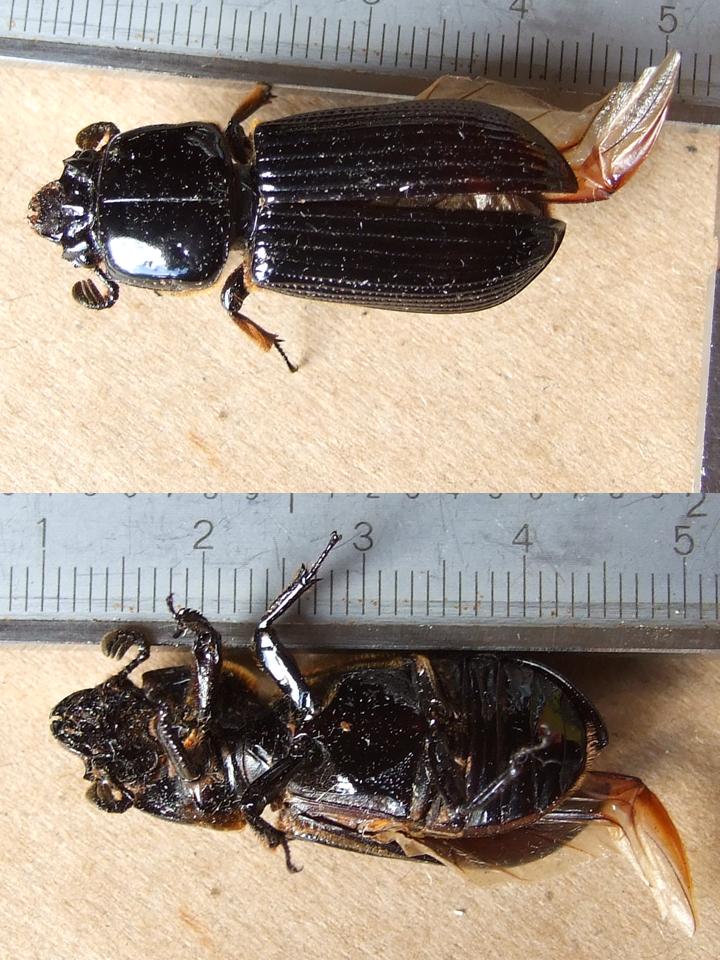 | FIGURE 1 |
|
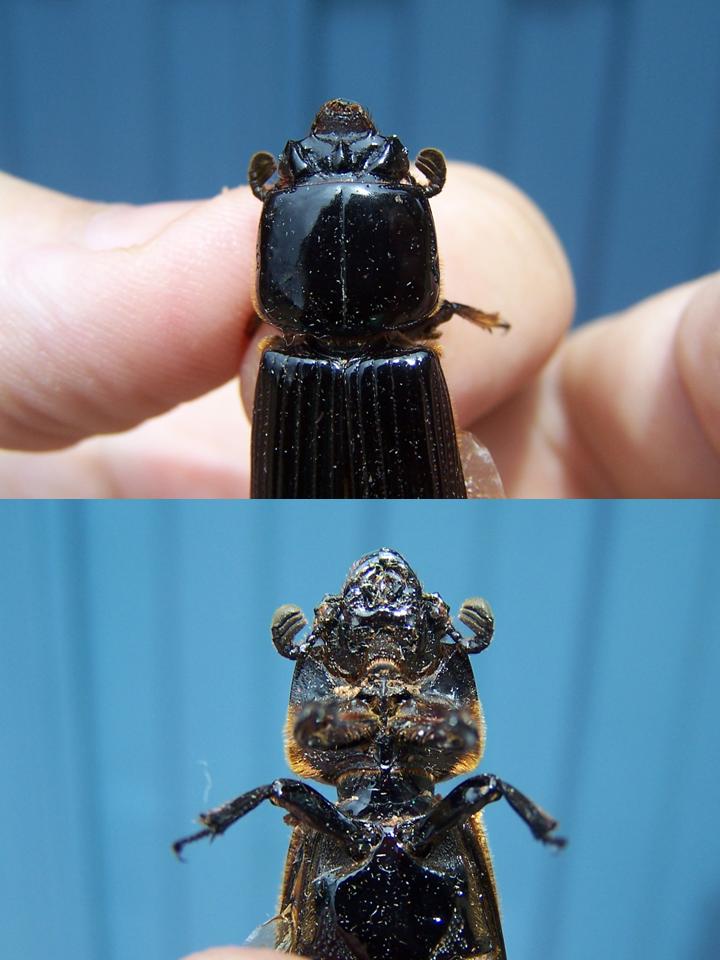 | FIGURE 2 |
|
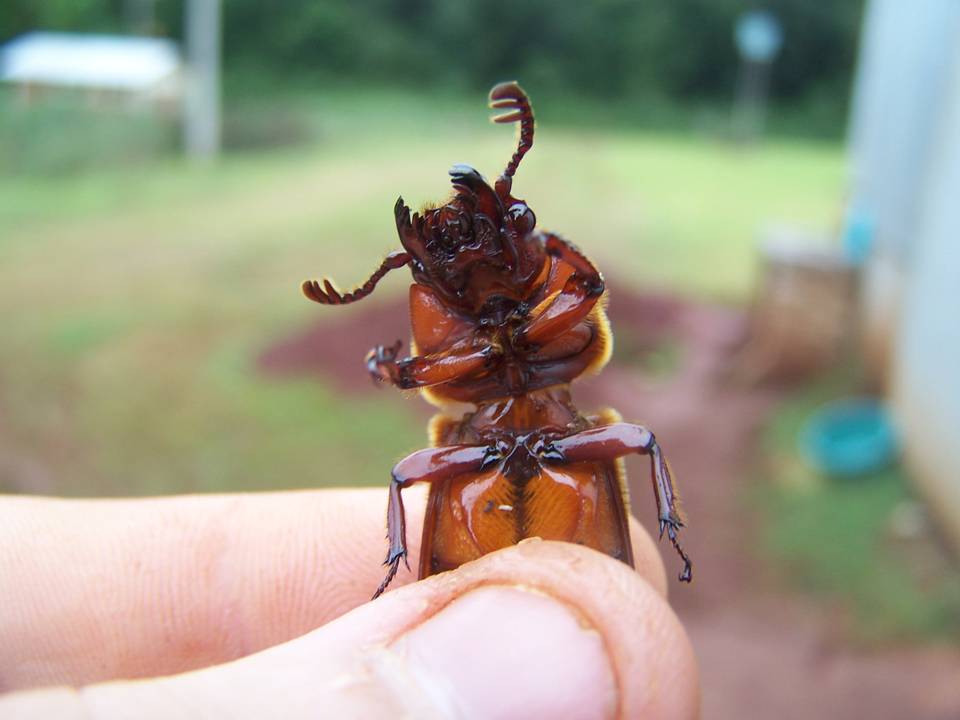 | FIGURE 3 |
|
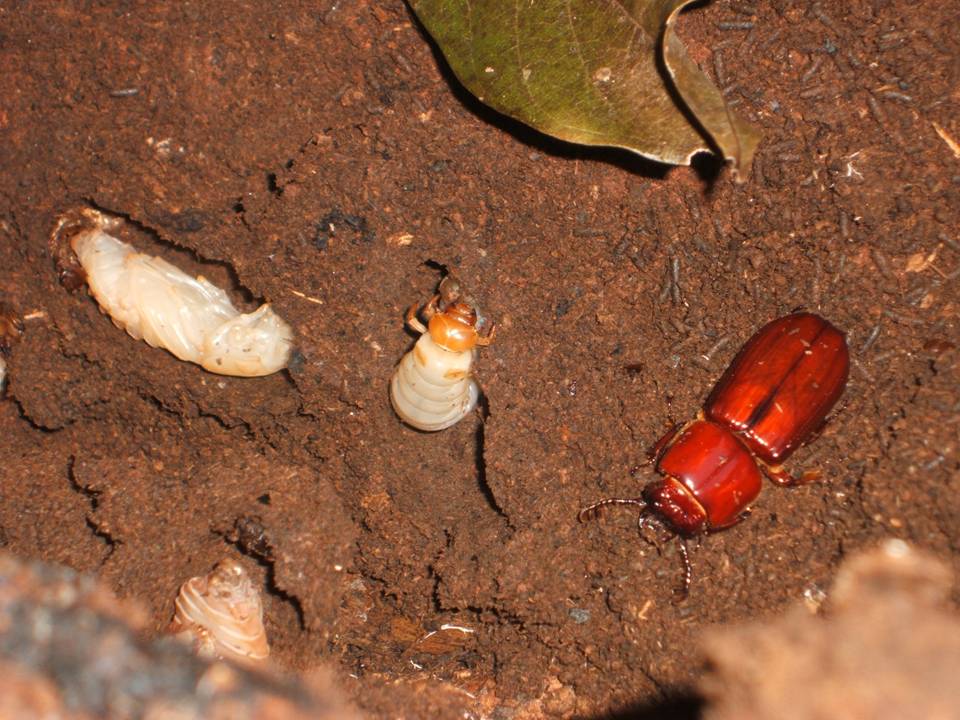 | FIGURE 4 |
|
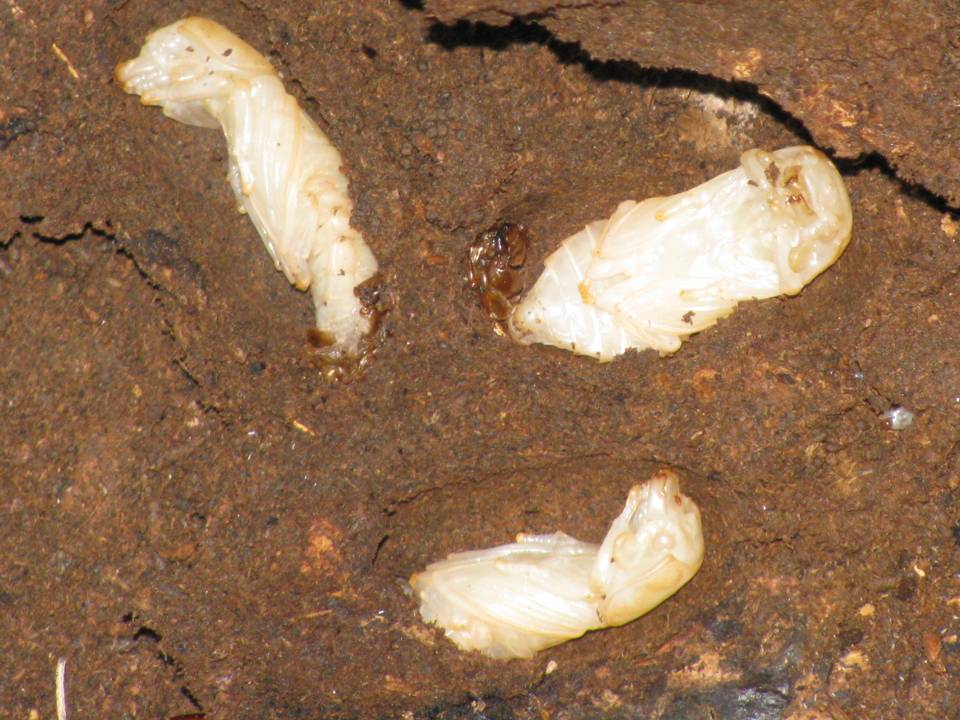 | FIGURE 5 |
|
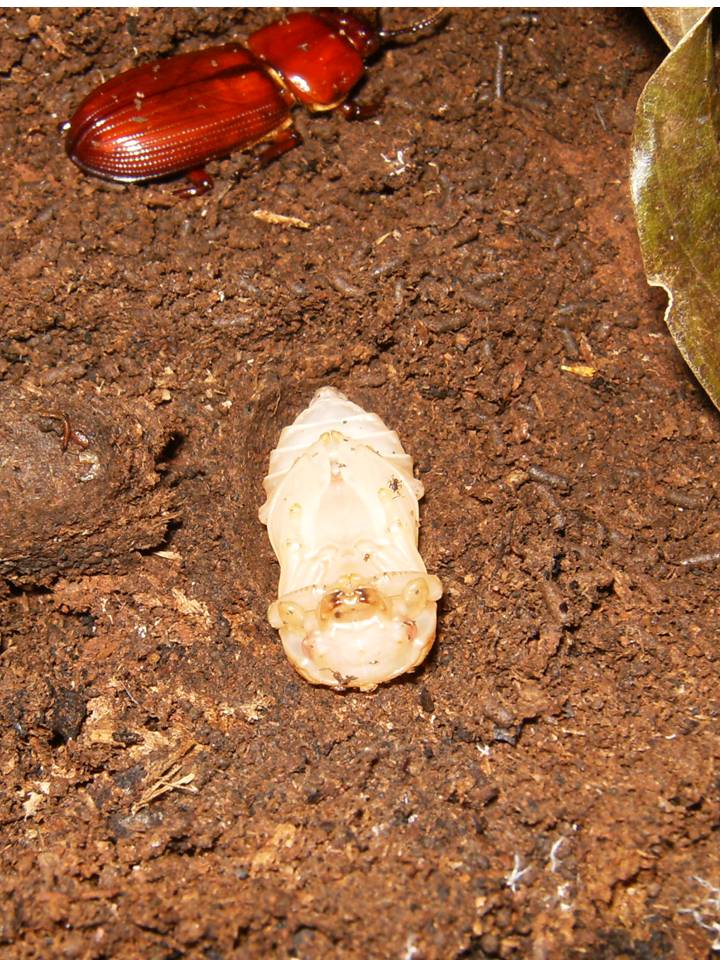 | FIGURE 6 |
|
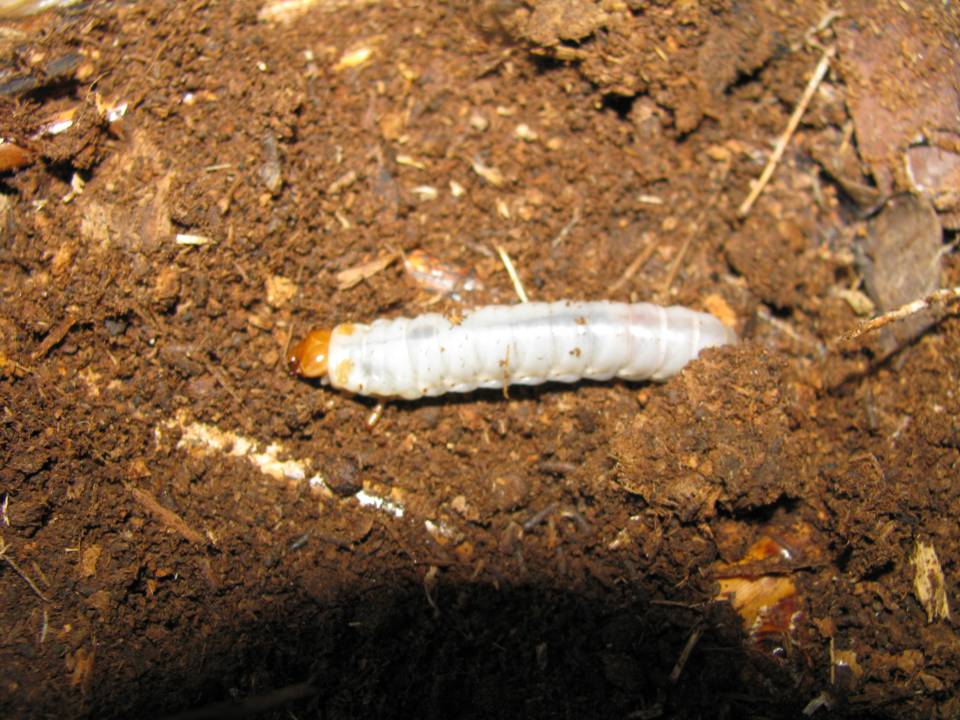 | FIGURE 7 |
|
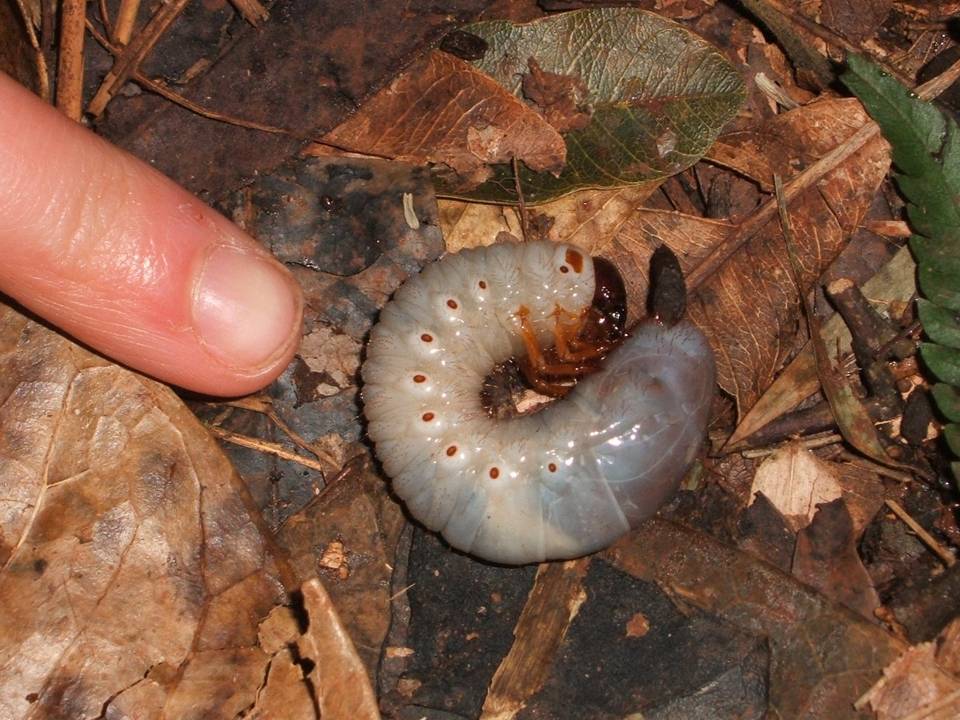 | FIGURE 8 |
|
Passalus punctiger Lepeletier & Serville 1825 Image Gallery
TAX: At least two species of Passalus occurring in South America fit the generally accepted description for Passalus punctiger, but it is unclear if both occur in Paraguay. Work is needed to correctly define the species limits.
DES: (Figs 1&2) Wholly black with sparse reddish-orange hairs. Apex of horn slightly free and consisting of three bulbous parts. Anterior border of the head with two inner turbercles. Antennae with three long lamellae. Fine yellow hairs on elytral shoulders and anterior sides. Body somewhat flattened and greater than 30mm in length. Metathoracic grooves hairy, but no hairs in mesothoracic grooves. Abundant punctations on posterior corners of metathoracic ventral shield and near anterior border of the head.
MMT: TL: 33.65mm (33.5-34mm); EL: 20mm; WI: 12.25mm (12-12.5mm); n=2
SSP: Passlaus coniferus is almost identical but has abundant hair in the mesothoracic grooves. Passalus interruptus has 1 to 5 hairs in the mesothoracic grooves, a body length greater than 40mm and the apex of the horn is not free.
ABU: Common.
DIS: Widespread. The species occurs from Arizona south to Paraguay and Argentina, also occurring on the Galapagos Islands. It is generally found below 1500m in altitude.
HAB: Found under and inside rotten logs in humid forest areas.
REP: Eggs are laid in tunnels in rotting wood. They are initially red but change to brown and then finally emerald-green shortly before hatching. Larvae, as with those of all Passalids, are easy to recognise, being whitish and appearing to have only two pairs of legs - the third pair of legs is reduced to form sound-producing organs which scrape against the mesocoxae. Larvae of Passalus punctiger have no long setae on the pronotum and 2 pairs of long setae on most abdominal tergites. The anal area has a ring of 10-12 setae. Freshly emerged adults are reddish-brown at first but darken to black as they harden.
Citable Reference: Schuster J (2007) FAUNA Paraguay Online Handbook of Paraguayan Fauna Bess Beetle Species Account 1 Passalus punctiger
Last Updated: 16 December 2007.
FIGURES 1&2 - Adults, PROCOSARA, PN San Rafael (Paul Smith 26 November 2006 - ECOSARA Biodiversity Database); 3 Freshly-emerged (red-brown) adult PROCOSARA, PN San Rafael (Paul Smith 5 May 2008 - ECOSARA Biodiversity Database); 4 Life stages, pupa, larvae and recently-emerged adult, PROCOSARA, PN San Rafael (Jeni Oborn March 2008 - ECOSARA Biodiversity Database); 5 Pupae, PROCOSARA, PN San Rafael (Pier Cacciali March 2008 - ECOSARA Biodiversity Database); ; 6 Pupa close-up, PROCOSARA, PN San Rafael (Moriz Stiefel April 2008 - ECOSARA Biodiversity Database); 7 Larva, PROCOSARA, PN San Rafael (Pier Cacciali March 2008 - ECOSARA Biodiversity Database); 8 Larva, PROCOSARA, PN San Rafael (Jeni Oborn June 2008 - ECOSARA Biodiversity Database).

